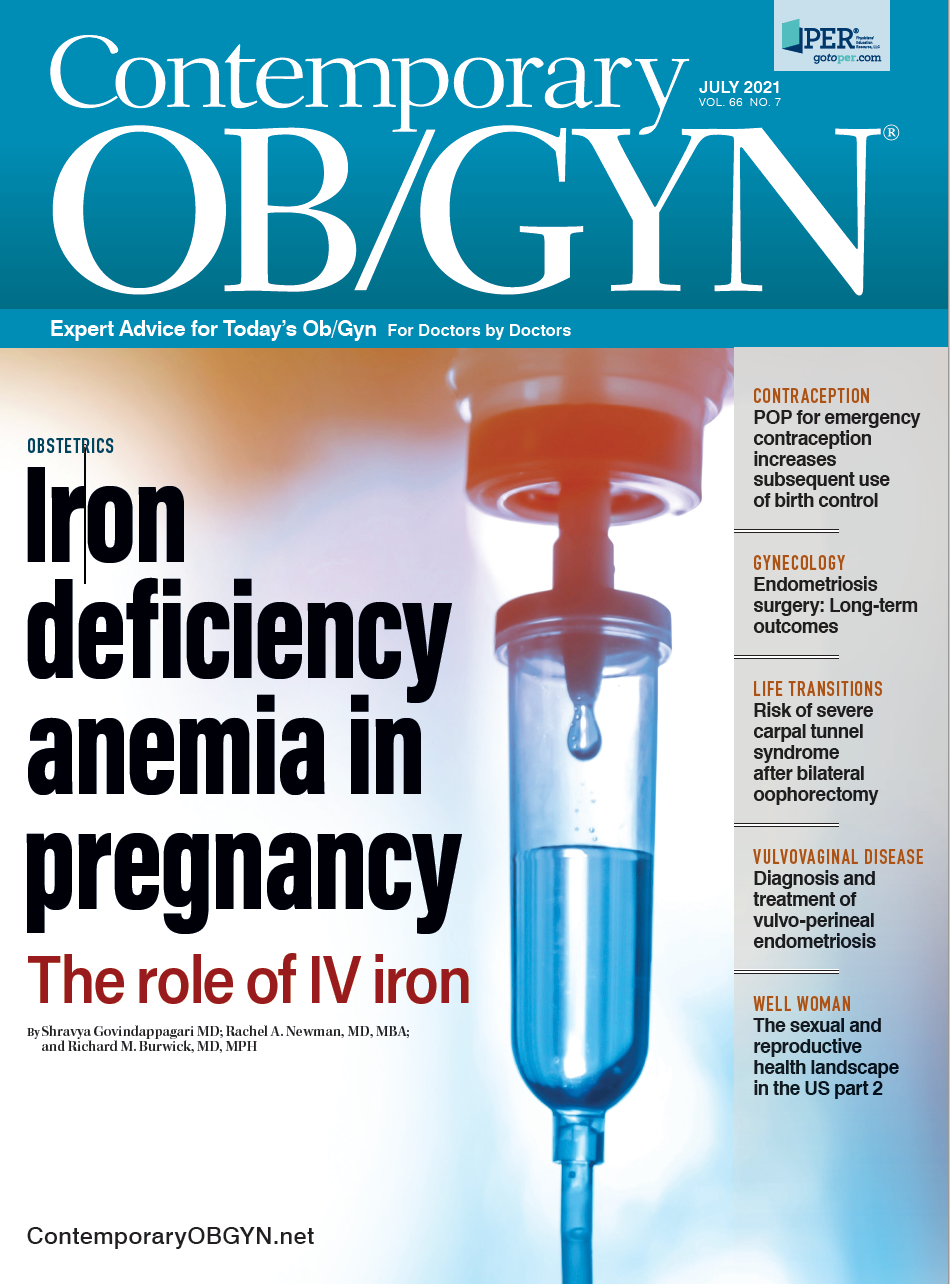Steps to optimize maternal health
As practitioners, advocating for our patients and managing common conditions to facilitate optimal pregnancy outcomes through preventative measures such as vaccination and addressing anemia have the potential for major impact.
I applaud providers for encouraging COVID-19 vaccination for pregnant and lactating women. Recent data published from the V-safe pregnancy registry, v-safe after vaccination health checker surveillance system, and the vaccine Adverse Event Reporting System provides reassurance of the use of the mRNA vaccine in pregnancy.1
This report of 35,691 pregnant women who received the COVID vaccine did not identify safety signals. Given that neither pregnant nor lactating women were included in the preauthorization clinical trials, post-authorization monitoring was performed to evaluate the safety of the vaccine. As we have previously highlighted, pregnant and lactating women need to be included in the evaluation of new therapeutic products.2,3,4 Importantly, given the risks of COVID, professional societies and organizations encouraged vaccination for these women even without such data.
Moving forward it is essential for us, as practitioners, to advocate for our patients and continue to push for their inclusion in the development and evaluation of products important for their care.
This issue of Contemporary OB/GYN® highlights another area of vital importance for our patients. With the emphasis on severe maternal morbidity and public reporting of adverse maternal outcomes, attention is driven to optimize maternal health. By optimizing health prior to and in pregnancy, both maternal and fetal outcomes may be improved. One example is maternal anemia, which is estimated to affect 42% of pregnant women globally.5 Maternal anemia is associated with a number of adverse maternal outcomes including preterm birth, fetal growth restriction, and transfusion. Transfusion is a leading cause of severe maternal morbidity. Therefore, prevention of anemia is an important goal both for the practitioner and the pregnant woman.
Maternal anemia is in part a physiologic response to the doubling of blood volume and increased requirements of the development of the fetus and placenta. It is usually due iron deficiency. Iron demands increase substantially in pregnancy, when there is an estimated total iron requirement of 1040 mg, with the greatest need in the third trimester. These needs are met through both dietary iron intake and mobilization of maternal iron stores (which often are insufficient).
Although oral iron supplementation is routinely recommended in pregnancy, it is often poorly tolerated. Furthermore, iron absorption is poor, thus increasing intake does not necessarily parallel iron uptake. Intravenous iron supplementation is increasingly available, and formulations have mitigated adverse outcomes and complications. Shrayva Govindappagari, MD, and colleagues provide insight on the role of IV iron in the setting of iron deficiency anemia in pregnancy in this issue. As they describe, the evidence base is growing and now include clinical trials, systematic reviews, and meta-analyses. In the first and second trimesters, reliance on oral supplementation and dietary counseling is best, with progression to IV iron if these fail, given the importance of adjudication of anemia prior to delivery.
As practitioners, advocating for our patients and managing common conditions to facilitate optimal pregnancy outcomes through preventative measures such as vaccination and addressing anemia have the potential for major impact.
References
- Shimabukuro TT, Kim SY, Myers TR, et al. Preliminary findings of mRNA Covid-19 vaccine safety in pregnant persons. N Engl J Med. 2021; 384 (24):2273-2282.doi: 10.1056/NEJMoa2104983. Epub 2021 Apr 21.
- Spong CY. A Missed Opportunity. Contemporary OB/GYN®. March 2021; 66(3): 10-11
- Spong CY. Addressing inequities in women's health research. Contemporary OB/GYN®. August 2020; 65(8): 6-7.
- Adhikari EH, Spong CY. COVID-19 vaccination in pregnant and lactating women. JAMA. 2021;325(11):1039–1040. doi:10.1001/jama.2021.1658
- Goonewardene M, Shehata M, Hamad A. Anaemia in pregnancy. Best Pract Res Clin Obstet Gynaecol. 2012; 26(1):3-24. doi: 10.1016/j.bpobgyn.2011.10.010

